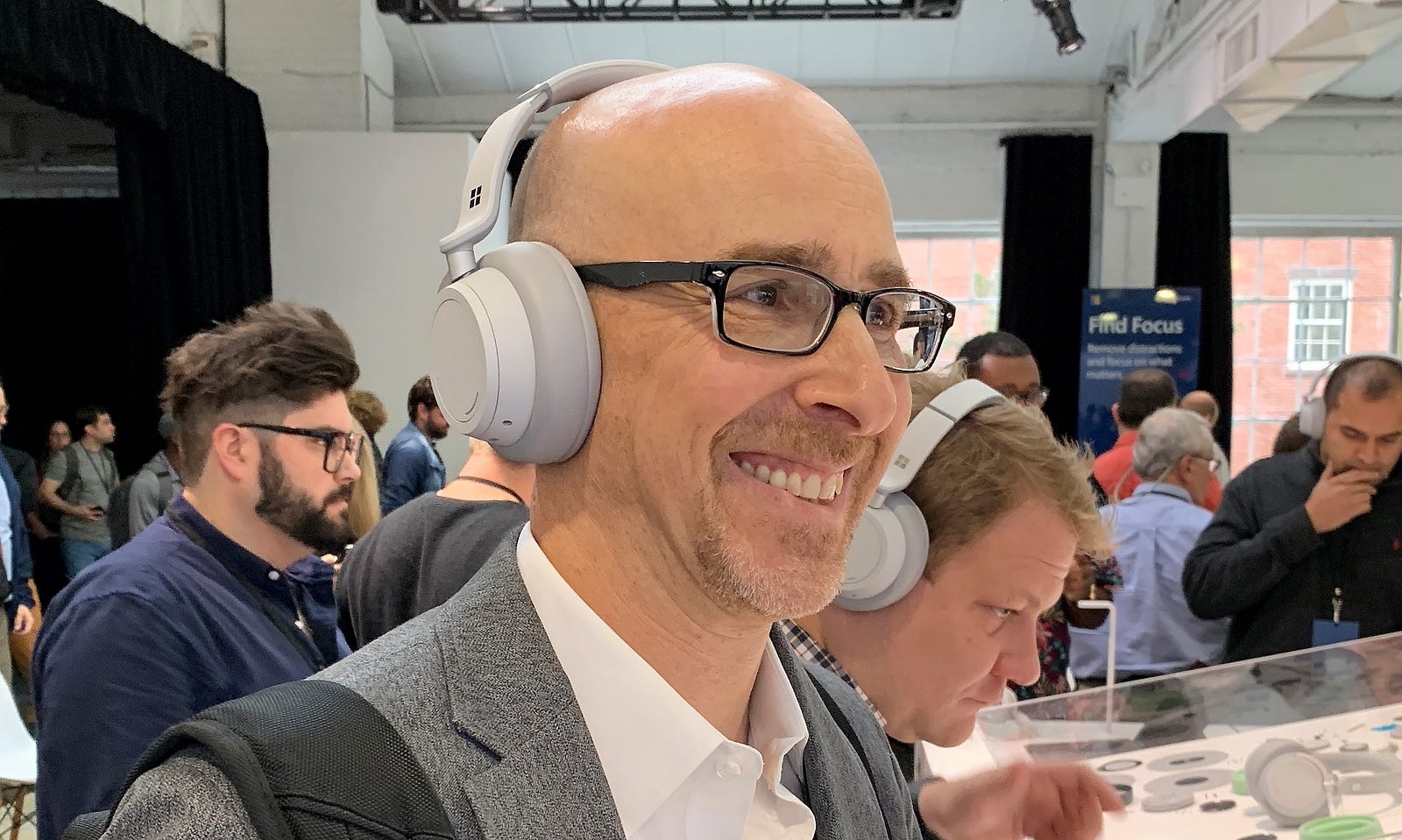Understanding Microsoft’s New Surface Headphones
Groene is one of my favorite people at Microsoft. Like his boss, Devices Head Panos Panay, who took the stage to introduce the new products, Groene is incredibly passionate about the Surface line and loves to share design details. As we talked, I noticed that a PR person stood at Groene’s elbow, lest he share too much.
Surface Headphones are sharp looking, but not particularly showy. The matte silver finish is oh-so-Surface. They reminded me a little of a pair of Surface Dials, the unusual Microsoft Windows 10 control puck, but with ear cushions stuck on one side.
“The look great but we didn’t design them around styling,” said Groene.
He told me that there were many prototypes on the road to this understated look. Early ones focused on the Surface Headphones potential use as a Skype communication device. One design had a physical microphone boom that extended from the earphones to in front of the mouth.
They quickly discarded that look. “No one wants to wear that. You look like an office worker,” laughed Groene. In the end, four far-field microphones, beam-forming technology, and software provided a better and much more elegant voice activation communication option (there are another 4 mics for noise cancellation).


I spent a little time with the Surface Headphones and the first word that came to mind when I put them on was “comfortable.” As soon as they covered my ears the demo room sounds, which were extremely loud, faded to a low hum. Using the dial, I was able to easily adjust the level of noise reduction. Music from the Spotify account on a Bluetooth paired PC sounded excellent. The headset uses Bluetooth LE to conserve energy. Anecdotally, they get 14–to-15-hours of playtime per charge. I did struggle to get Microsoft’s digital assistant Cortana to wake on my voice, but, as I said, the room was very loud. The tap and hold gesture did get Cortana’s attention; I could see her text response on the Surface Pro 6 screen and hear her voice in my head.
From our chat, it was clear Groene relished the myriad challenges of designing wearable technology. For guidance he turned, naturally, to the HoloLens team. That wearable Windows 10 mixed reality headset is, in my experience at least, much more comfortable to wear atop your noggin than it should be.
Groene’s team used the 7,000 head models, which included a lot of ear information ( there are so many different kind of ears), that the HoloLens team had captured to figure out how to build their own wearable tech.
Not only did Groene’s team make sure the Surface Headphones are lightweight, but Groene told me they worked on comfort for eyeglass wearers, as well. Though, “it depends on how extravagant you get on frames,” he added.
